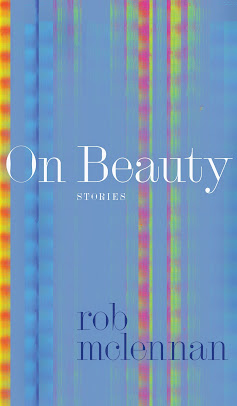My Father Explains Why
They Left Me Behind When Defecting
in Hoa Nguyen’s unrelated future tense
You are the same to me.
The baby in the photo you
were, dark
curls we kissed before
fleeing.
Your mom was pregnant
with
the one she birthed in america.
Your eyes didn’t match.
One was yellower.
And no leaves on the
lindens then
we didn’t know if we’d
see you again.
We didn’t know if we’d
see you again
and know leaves on the
linden, then.
One was yellower.
Your eyes didn’t match
the one she birthed in america.
Your mom was pregnant
with
curls we kissed before fleeing.
The baby in the photo you
were, dark
you are. The same to me.
The
latest from
Birmingham, Alabama-based poet, fiction writer and editor Alina Stefanescu, and the first collection I’ve properly gone through of hers, is the
remarkable
My Heresies (Louisville KY: Sarabande Books, 2025), a lyric exploration
of being and becoming, of family histories and geographic shifts. “The first
word wasn’t love, was it?” she writes, within the first poem of the two-part “Cosmologies,”
“It was this once that sat upon a time we can’t locate / in physics. It was the
science of bread / being broken and eaten. // I am still terrible at division.”
My Heresies is a collection of big, complicated emotions, cultural
collision and a fierce intelligence, composed with such a delicate and careful
ease of the line. “I, too, would appreciate / being courted at the leveling /
of the sacred.” she writes, as part of the short poem “Little Things: A Ring,” “If
I can’t partake of the trifecta, / I will settle for that flaming / thing in
the angel’s right hand.” The poems are expansive and intimate, containing the
whole world and the author’s entire life in the smallest moment, the most contained
set of sentences.
Back in 2020 via the Spotlight series, she wrote of her paired
elements of Romanian and Alabaman as opposed to Romanian and American, a
duality that is very much at the heart of this collection:
I’ve been trying to
reconcile the self with the borders of multiple identities. Perhaps parenting
forces these thoughts to the surface somehow — for example, why I identify as
Romanian-Alabamian rather than Romanian-American; and how the word “unamerican”
has been used to describe (and shame) me so often that pinning “American” to
myself feels like a moving target. Alabamian is easier if only because saying
unalababamian is phonetically clunky and awkward and therefore most humans
don’t invite it to their tongues.
If I write about the
South and was socialized in the South, am I Southern? This is a question which
depends on how I write the South. Every tough word I use is a wall I build in
defense against the walls that I blame others for building and I have no self-defense
against the irony and uselessness of that apart from my culpabilities.
With
opening poem and five carved, numbered sections, there is an element of My
Heresies of being constructed as a long sentence, a book-length suite of
poems seamlessly stitched into a single, ongoing conversational thread. The
poems are propelled by hush and halt, a tempo of thoughtful measure,
articulation, excavation and archaeological play, but one that loops and reels
and revels in repetition, managing to find new elements across familiar
stories, familiar lines and phrases. “Failure to absorb the verb / and modify
the actor accordingly.” begins the poem “Indictment for Failure to Conjugate,” “To
sit and / play dumb.” There is also an interesting thread contained within this
collection of the moments and lyrics of the late German-speaking Romanian poet Paul Celan (1920-1970), a poet with whom Stefanescu feels both cultural and poetic
affinity. “Paul Celan begins with an act of self-naming.” begins the poem “Sonnet
at the Ghost Commune,” “The poem claims the invention of self / on a Bucharest
windowsill. Poets put // the moon in its place / at the horn of the table / on
the shoe of the satyr folding laundry into bohemian ballet.”
There
is such a detailed intimacy to this collection, and a sharp and open intelligence
at play, one that invites the reader in as an equal, unafraid of what these
lines might reveal. “My mother and I flit between French and Romanian / when
sharing a bottle of wine.” the second part of “Cosmologies” begins. “In hindsight,
the past tense overrides / the presence.” As the poem continues:
My mother numbered
her conquests but left them
nameless because sex is a
comet that begins in a memory of longing.
The mother is a creature
who teaches us to seduce it. “Sweetie,
you must do everything
once,” she says. “Refuse to repent,
and don’t ever forget…”






